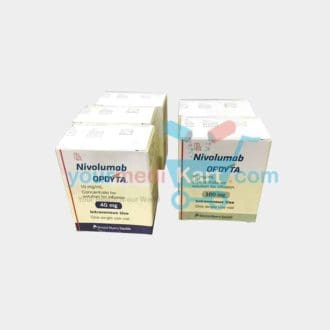Bevarest 100Mg Inj
EMCURE
PACKING : 1 VIAL
GENERIC NAME : BEVACIZUMAB
OFFER { Buy 3 Get 1 Free } Use Code : BVR100
What is Bevarest 100 Mg ?
Bevarest was approved by the FDA for use in metastatic colorectal cancer when used with standard chemotherapy treatment (as first-line treatment) and with 5-fluorouracil-based therapy for second-line metastatic colorectal cancer.
Bevacizumab has also been examined as an add on to other chemotherapy drugs in people with non-metastatic colon cancer. The data from two large randomized studies showed no benefit in preventing the cancer from returning and a potential to cause harm in this setting.
Various uses of Bevarest .
- Lung Cancer
- Colorectal Cancer
- Breast Cancer
- Renal Cancer
- Brain Cancer
- Eye Disease
Machenism of Action of Bevarest
baverest is a recombinant humanized monoclonal antibody that blocks angiogenesis by inhibiting vascular endothelial growth factor A (VEGF-A). VEGF-A is a chemical signal that stimulates angiogenesis in a variety of diseases, especially in cancer. Bevacizumab was the first available angiogenesis inhibitor in the United States.
Adverse Effects of Bevarest
Bevarest inhibits the growth of blood vessels, which is part of the body’s normal healing and maintenance. The body grows new blood vessels in wound healing, and as collateral circulation around blocked or atherosclerotic blood vessels. One concern is that bevarest will interfere with these normal processes, and worsen conditions like coronary artery disease or peripheral artery disease.
The main side effects are hypertension and heightened risk of bleeding. Bowel perforation has been reported. Fatigue and infection are also common. In advanced lung cancer, less than half of patients qualify for treatment. Nasal septum perforation and renal thrombotic microangiopathy have been reported. In December 2010, the FDA warned of the risk of developing perforations in the body, including in the nose, stomach, and intestines.
In 2013, Hoffmann-La Roche announced that the drug was associated with 52 cases of necrotizing fasciitis from 1997 to 2012, of which 17 patients died. About 2/3 of cases involved patients with colorectal cancer, or patients with gastrointestinal perforations or fistulas.
These effects are largely avoided in ophthalmological use since the drug is introduced directly into the eye thus minimizing any effects on the rest of the body.
Neurological adverse events include reversible posterior encephalopathy syndrome. Ischemic and hemorrhagic strokes are also possible.




